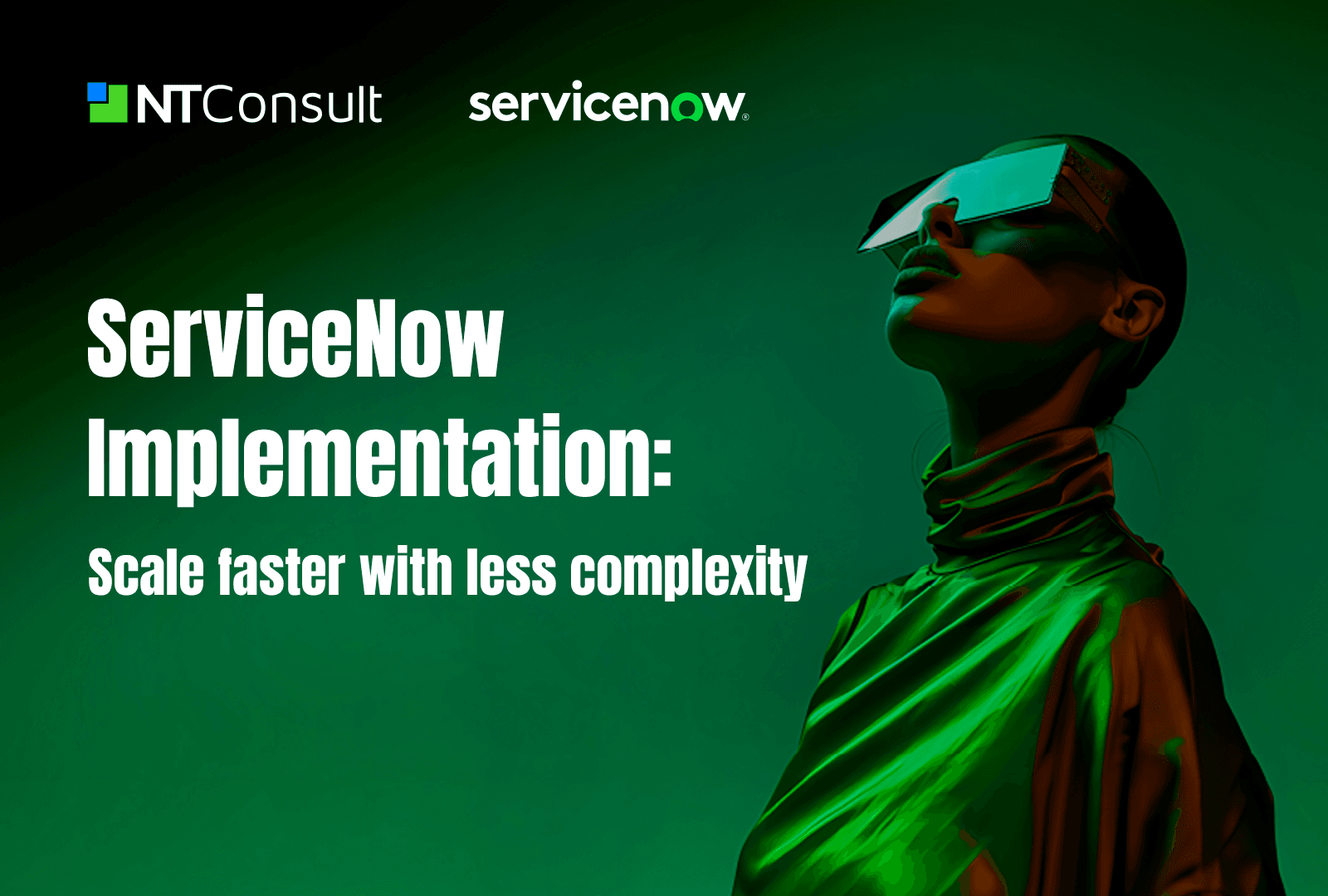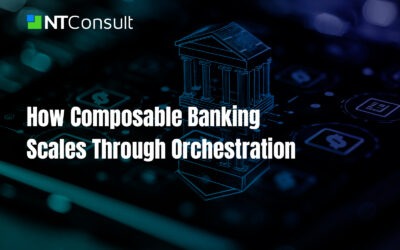Delivering fast, efficient, and compliant internal services is a baseline expectation. Yet, many enterprises still struggle with fragmented platforms and manual workflows that increase complexity and hinder scalability. ServiceNow has emerged as a strategic solution for organizations looking to unify service delivery, reduce operational friction, and generate measurable ROI across departments like HR, IT, Legal, and Procurement.
In this article, we’ll explore how ServiceNow transforms shared services into integrated, autonomous workflows, and why choosing the right implementation partner is critical to realizing its full value.
Why enterprises are turning to ServiceNow to modernize shared services
ServiceNow implementation is becoming the standard for enterprises looking to modernize and unify their shared services.
Many organizations still rely on fragmented systems across HR, IT, Legal, and Procurement creating inconsistent experiences, operational inefficiencies, and limited visibility. By consolidating these service functions into a single enterprise workflow automation platform, ServiceNow enables real-time tracking, governance, and cross-departmental collaboration.
The impact is measurable: faster issue resolution, reduced manual effort, and significant cost savings. Bayer, for instance, saved over $10 million by streamlining its internal services with ServiceNow.
Before the implementation, Bayer faced challenges familiar to many enterprise leaders:
- decentralized service portals,
- long resolution cycles, and lack of cross-departmental governance;
- HR and Procurement teams operated in silos, often duplicating work or missing service-level targets due to fragmented workflows.
With ServiceNow, they established a unified service layer that automated ticket routing, standardized approval flows, and provided real-time visibility into KPIs across departments. For decision-makers under pressure to scale without losing control, Bayer’s outcome underscores the value of a well-executed ServiceNow implementation.
The ROI of automation: ServiceNow use cases with real business outcomes
ServiceNow implementation drives measurable business impact. Enterprises that deploy ServiceNow with strategic guidance report substantial gains (source):
- 40% reduction in ticket volume
- 30% increase in team productivity
- Multi-million dollar operational cost savings
These outcomes aren’t theoretical. They stem from real-world applications across sectors:
- Onboarding and offboarding: automated workflows reduce delays and manual errors, accelerating new employee readiness.
- Legal workflow automation: Intelligent routing and dispute resolution shorten cycle times and reduce legal overhead.
- Procurement process integration: Streamlined approvals and real-time inventory validation improve budget compliance.
- IT Operations: automated incident routing and real-time dashboards reduce downtime and enhance responsiveness.
NTConsult specializes in unlocking these results by aligning platform capabilities with each client’s architecture and KPIs. Our cross-sector expertise ensures that every use case (from HR to IT) fully orchestrated, monitored, and optimized for performance.
What is the AI Control Tower and why does it matter in implementation?
The AI Control Tower, introduced at ServiceNow’s Knowledge 2025, is a strategic layer designed to manage the complexity of enterprise-scale automation. As organizations adopt AI agents to handle workflows across IT, HR, Legal, and Procurement, the challenge shifts from execution to governance. Without orchestration, AI initiatives often operate in silos, increasing the risk of duplication, compliance failures, and inconsistent decision-making.
The AI Control Tower centralizes oversight of all intelligent workflows. It monitors agent behavior, enforces business rules, aligns decisions with organizational policies, and ensures auditability across departments. It transforms AI from a scattered initiative into a managed, scalable capability.
Crucially, it enables a model of Agentic AI, where intelligent agents are not only executing tasks, but autonomously making decisions based on evolving business rules, real-time context, and risk thresholds. These agents can escalate exceptions, interact with multiple systems, and adapt workflows dynamically, all within the governance parameters set by the organization.
In regulated sectors like finance and healthcare, this agentic model is particularly impactful. For example, AI agents can independently flag high-risk transactions, reroute compliance workflows based on jurisdiction, or trigger legal approvals when sensitive data is involved. This not only accelerates execution but ensures traceability and consistency, two pillars of operational resilience in high-stakes environments.
By adopting the AI Control Tower and agentic orchestration, enterprises move beyond automation, they operationalize intelligence at scale, with confidence and control.
From onboarding to compliance: real-world automation examples
ServiceNow enables organizations to automate complex, multi-department workflows with precision, traceability, and scalability. These automations are not limited to isolated tasks, they span the full service lifecycle, transforming how teams collaborate and respond to business needs.
- HR: from onboarding to exit processes, automation ensures consistent task execution, real-time progress tracking, and compliance with organizational policies. Digital signatures, task reminders, and document routing are handled without manual follow-ups.
- Legal: contract lifecycle management is streamlined through metadata extraction, automated risk assessments, and intelligent approvals. Legal teams gain faster turnaround on reviews and better control over document versions.
- Procurement: budget compliance and policy enforcement are enhanced through dynamic approval chains, supplier validation workflows, and integration with finance systems. Automation reduces maverick spending and accelerates purchasing cycles.
- IT: ServiceNow orchestrates incident management, system alerts, and failover procedures in real time. Auto-routing of tickets, integrated CMDB updates, and SLA monitoring ensure operational continuity and rapid resolution.
These examples illustrate how ServiceNow transforms internal services into cohesive, resilient systems that scale with business demands.
What does a ServiceNow implementation partner really do?
A strategic ServiceNow implementation partner plays a critical role far beyond basic platform setup. This partner is responsible for translating complex business needs into scalable, secure, and compliant digital workflows, starting from architecture and continuing through post-implementation optimization.
Key responsibilities include:
- Customer experience & journey automation
Designing customer-centric solutions using CSM and Field Service to elevate service experiences, integrating channels, automating journeys, and enabling intelligent, AI-powered interactions. - Shared services transformation (GBS & ESG)
Supporting the creation and evolution of Global Business Services (GBS) by unifying HR, IT, Legal, Finance, and Procurement into a single platform with governance and ESG-ready reporting. - App engine: business solutions development
Building agile, custom applications using App Engine that transform ideas into scalable business solutions, fully integrated with operational workflows and user experience layers. - AI-powered ServiceNow solutions
Embedding GenAI and native ServiceNow AI to deliver:- Intelligent ticket resolution
- Automated recommendations
- Virtual agents and copilots
- Predictive analytics on demand and performance
- Digital solution architecture & legacy integration
Designing scalable digital architectures and safely integrating legacy systems to avoid disruption and prevent future technical debt. - Governance, workflow & automation management
Modeling processes, automating workflows, and embedding governance structures to support SLAs, compliance, and long-term scalability. - Performance monitoring & continuous optimization
Establishing KPIs from day one and continuously optimizing workflows based on real usage data to drive adoption and business outcomes. - Change & adoption strategy
Guiding organizational change and accelerating user adoption with a structured strategy focused on long-term solution success. - Innovation & digital transformation advisory
Acting as strategic advisors to position ServiceNow as a core digital business platform, not just a back-office tool.
An effective implementation partner operates as an extension of the enterprise, balancing speed with governance, flexibility with stability, and innovation with measurable impact.
Why choosing the wrong ServiceNow partner is expensive
Choosing the wrong ServiceNow implementation partner can introduce risks that compound over time, costing far more than the platform itself. When a partner lacks architectural rigor or cross-functional alignment, the result is often fragmented workflows, inconsistent adoption, and systems that fail under scale.
Consequences include:
- Workflow fragmentation: isolated automations that don’t talk to each other, creating inefficiencies instead of solving them.
- Delayed adoption: teams resist change when the platform isn’t aligned to their real processes or lacks intuitive flows.
- Security and compliance gaps: poorly integrated systems open the door to data breaches and audit failures.
- Broken SLAs: without visibility, monitoring, and governance structures in place, performance slips through the cracks.
Effective digital transformation demands more than technical setup, it requires architectural foresight, understanding of regulated environments, and the ability to coordinate across departments with clarity. Partners who bring senior expertise, proven frameworks, and delivery transparency help avoid rework, reduce operational risk, and ensure the transformation delivers real, repeatable value.
The key criteria for selecting a ServiceNow implementation partner
A strategic ServiceNow implementation partner plays a critical role far beyond basic platform setup. This partner is responsible for translating complex business needs into scalable, secure, and compliant digital workflows, starting from architecture and continuing through post-implementation optimization.
Key responsibilities include:
- Solution architecture: designing a scalable foundation aligned with enterprise systems and transformation goals, avoiding future technical debt.
- Legacy system integration: ensuring seamless data flow and interoperability across core systems without compromising stability.
- Workflow modeling and automation governance: defining, documenting, and governing processes to support internal SLAs, regulatory requirements, and change management protocols.
- Technical enablement and knowledge transfer: equipping internal teams with documentation, training, and low-code capabilities to maintain long-term autonomy.
- Performance monitoring and optimization: establishing metrics from day one, tracking adoption, and refining workflows based on real usage data.
- Cross-functional coordination: navigating stakeholder priorities across departments like IT, HR, Legal, and Procurement to ensure consistent alignment and delivery.
An effective implementation partner operates as an extension of the enterprise, balancing speed with governance, flexibility with stability, and innovation with measurable impact.
Use this checklist:
- Certified and experienced implementation team;
- Proven integration with legacy systems;
- Sector-specific experience in finance, telecom, and healthcare;
- Senior squads with agile methods;
- Low-code enablement for faster adoption;
- Nearshore delivery for timezone alignment.
Back to the standard: unlocking ROI from underused ServiceNow environments
As ServiceNow environments grow more complex, many organizations drift away from the platform’s foundational strengths. Over time, customizations, disconnected apps, and departmental silos can dilute ServiceNow’s value, leading to slower updates, higher maintenance costs, and inconsistent user experiences.
Returning “back to the standard” means refocusing on the native capabilities of the platform, standardized workflows, reusable components, and centralized governance. It’s not about redoing what’s been built, but strategically realigning existing instances with best practices to restore speed, clarity, and ROI.
Key indicators that an environment is underperforming:
- Excessive custom code that hinders upgrades
- Poor cross-team adoption and shadow processes
- Disconnected workflows with overlapping functions
Reengaging through this lens enables scale without technical debt, simplifies governance, and empowers business units to innovate faster. For organizations seeking long-term sustainability, this reset can be the most powerful move.
What sets a top-tier ServiceNow partner apart
Not all ServiceNow partners are built for long-term impact. What separates high-performing consultancies is their ability to deliver value beyond implementation, transforming the platform into a strategic engine for the business.
Key attributes of such partners include:
- AI-Driven transformation: leveraging ServiceNow’s full potential in orchestration, prediction, and adaptive automation across departments.
- Workflow automation at scale: implementing and scaling complex service flows with precision, even in highly regulated or multi-stakeholder environments.
- CRM and frontline innovation: integrating customer-facing operations with back-office automation, bridging CRM and service management.
- Data network integration: connecting ServiceNow with real-time data flows, APIs, and enterprise systems to ensure continuity and intelligence.
- Autonomous IT operations: designing self-healing, self-routing workflows that reduce incident volume and improve operational stability.
- Strategic senior talent allocation: deploying experienced teams who engage deeply with business stakeholders and ensure continuity from architecture to rollout.
These attributes result in partners that don’t just deliver a functional platform, but architect and evolve it to consistently return business value across cycles of growth and transformation.
Is your organization ready to engage with a ServiceNow partner?
Before launching a ServiceNow initiative, organizations should assess their maturity across critical areas. Successful implementations don’t start with the platform, they start with strategic clarity.
Use the checklist below as a diagnostic:
- Process visibility: are your core workflows mapped, documented, and understood across departments?
- Executive sponsorship: is there leadership alignment and budgetary support for a cross-functional transformation?
- Operational friction: which departments experience the most delays, manual workarounds, or service-related complaints?
- Service governance: do you have defined SLAs and KPIs for internal services, and a way to monitor them?
If these questions raise uncertainty, it may be the right moment to explore a structured readiness assessment. Engaging early with a partner can accelerate clarity, prioritize workflows, and prevent costly detours during implementation.
Conclusion
ServiceNow is a transformation framework. But that transformation only happens when architecture, governance, and operational strategy move in sync. Enterprises today need orchestration that scales, adapts, and delivers measurable outcomes across business units.
If your organization is serious about simplifying operations, enhancing service quality, and accelerating outcomes across HR, IT, Legal, and Procurement, the path starts with clarity, about your processes, your objectives, and the right partner to navigate complexity with you.
Want a clearer path to ServiceNow success?
Explore key takeaways from Knowledge 2025, including the AI Control Tower, real-world automation benchmarks, and what’s next for enterprise orchestration.
Access the executive summary now
Frequently Asked Questions (FAQ)
ServiceNow offers a unified platform with native capabilities for IT, HR, Legal, Procurement, and Customer Service. It enables standardized, cross-functional workflows with built-in governance, real-time dashboards, and enterprise-grade scalability.
2. When should an organization consider returning ‘Back to the Standard’?
If you’re experiencing slow updates, high maintenance costs, or poor adoption across teams, it may be time to reduce customizations and realign your ServiceNow instance with best practices. This enhances agility and long-term ROI.
3. How does Agentic AI improve traditional automation?
Agentic AI allows autonomous agents to make real-time decisions, route exceptions, and adapt workflows based on live context, all within governance parameters. This elevates automation from reactive tasks to proactive, intelligent orchestration.
4. What does a mature ServiceNow implementation look like?
Mature environments are characterized by standardized workflows, low reliance on custom code, automated SLA tracking, integrated legacy systems, and empowered internal teams using low-code tools to evolve services.
5. How long does a typical implementation take?
Timelines vary based on scope, but high-impact ServiceNow rollouts often deliver visible results in 8–16 weeks when aligned to strategic objectives and executed by experienced squads.
6. Is ServiceNow only for IT workflows?
No. While it originated in ITSM, ServiceNow now supports enterprise-wide functions, HR onboarding, legal approvals, procurement workflows, compliance tracking, and more, through one unified platform.


 Portuguese
Portuguese Spanish
Spanish


